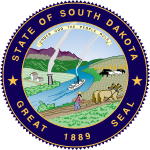
William Henry McMaster was an American politician who served as the tenth Governor of South Dakota from 1921 until 1925. A member of the Republican Party, he went on to serve as a member of the United States Senate from South Dakota from 1925 to 1931.

The 1948 United States Senate election in South Dakota took place on November 2, 1948. Incumbent Republican Senator Harlan J. Bushfield, suffering from poor health, declined to run for re-election. On September 27, 1948, he died in office; his wife, Vera C. Bushfield, was appointed to succeed him. Congressman Karl E. Mundt easily won the Republican primary and advanced to the general election, where he was opposed by Democratic nominee John A. Engel, an attorney. Hundt defeated Engel in a landslide.

The 1889 South Dakota gubernatorial election was held on October 1, 1889, to elect the first Governor of South Dakota. Territorial Governor Arthur C. Mellette received the Republican nomination and faced former Territorial Commissioner of Immigration P. F. McClure, the Democratic nominee, in the general election. Mellette defeated McClure in a landslide.

The 1894 South Dakota gubernatorial election was held on November 6, 1894. Incumbent Republican Governor Charles H. Sheldon ran for re-election to a second term. Despite facing a thread of defeat at the Republican convention, Sheldon was renominated unanimously. In the general election, he faced Populist nominee Isaac Howe, a Spink County Judge; James A. Ward, the former state chairman of the South Dakota Democratic Party; and Prohibition nominee M. D. Alexander. The election was largely a replay of the gubernatorial elections of 1890 and 1892, with the Farmers' Alliance candidate placing second and the Democratic nominee placing a distant third. This time, however, Sheldon won an outright majority and the Democratic Party's vote share shrunk to just 11%, its worst performance in state history.
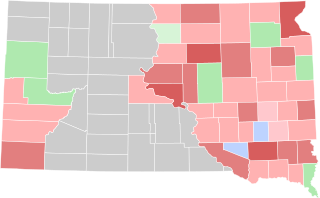
The 1892 South Dakota gubernatorial election was held on November 8, 1892. Incumbent Republican Governor Arthur C. Mellette declined to seek re-election to a third term. Former territorial legislator Charles H. Sheldon was nominated by the Republican Party as Mellette's replacement, and he faced former legislator Abraham Lincoln Van Osdel, a leader in the South Dakota Farmers' Alliance and the nominee of the Independent Party, along with Democratic nominee Peter Couchman, in the general election. The result was largely a replay of the 1890 election, with Sheldon winning by a large margin, but only a plurality, and Van Osdel taking second place over Couchman.

The 1896 South Dakota gubernatorial election was held on November 3, 1896. Incumbent Republican Governor Charles H. Sheldon declined to run for re-election to a third term. Former Secretary of State Amund O. Ringsrud was nominated as Sheldon's replacement at the Republican convention. Ringrud's main opponent was businessman Andrew E. Lee, who was nominated by a makeshift coalition of Populists, Free Silver Republicans, and Democrats. In the general election, Lee narrowly defeated Ringsrud, the first defeat for the Republican Party in a gubernatorial election since statehood.

The 1902 South Dakota gubernatorial election was held on November 4, 1902. Incumbent Republican Governor Charles N. Herreid ran for re-election to a second term. He faced former Watertown Mayor John W. Martin, the Fusion nominee who was listed as the Democratic nominee, in the general election. Herreid defeated Martin in a landslide to win his second term.

The 1898 South Dakota gubernatorial election was held on November 8, 1898. Incumbent governor Andrew E. Lee, elected in 1896 as a Populist, he ran for re-election as a Fusion candidate. He was challenged by Republican nominee Kirk G. Phillips, the state treasurer. Lee narrowly defeated Phillips to win his second term as governor, but most of his Fusion allies lost their elections, leaving him as the lone statewide officeholder.

The 1900 South Dakota gubernatorial election was held on November 6, 1900. Incumbent Governor Andrew E. Lee, a Populist elected under Fusion with Populists, Free Silver Republicans, and Democrats, opted to run for Congress rather than for a third term. Former Sioux Falls Mayor Burre H. Lien won the Fusion nomination and ran against former Lieutenant Governor Charles N. Herreid. However, despite the closeness of the 1896 and 1898 elections, the Fusion's luck ran out; Herreid defeated Lien in a landslide to reclaim the office for the Republican Party.

The 1906 South Dakota gubernatorial election was held on November 6, 1906. Incumbent Republican Governor Samuel H. Elrod ran for re-election, but was defeated for renomination at the Republican convention by former Attorney General Coe I. Crawford. In the general election, Crawford was opposed by the Democratic nominee, former State Representative John A. Stransky of Brule County. Crawford had little difficulty defeating Stransky in a landslide, largely matching Elrod's margin of victory from two years earlier.

The 1920 United States Senate election in South Dakota took place on November 2, 1920. Incumbent Democratic Senator Edwin S. Johnson declined to seek re-election to a second term. In the Democratic primary, attorney Ulysses Simpson Grant Cherry defeated former State Senator Louis Napoleon Crill and former U.S. Marshal Tom Taubman, while in the Republican primary, Governor Peter Norbeck defeated former State Supreme Court Justice Dick Haney. In the general election, Cherry and Norbeck faced a litany of independent candidates, including Nonpartisan League candidate Tom Ayres. Benefiting from the split in left-wing candidates, Norbeck won by a wide margin, with Ayres narrowly beating out Cherry for second place.
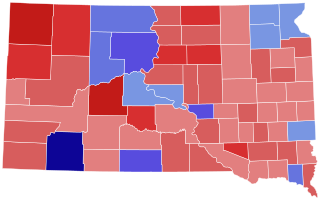
The 2018 South Dakota Attorney General election was held on November 6, 2018. Incumbent attorney general Marty Jackley was term-limited and ran for Governor of South Dakota. In June 2018, the South Dakota Republican party nominated Jason Ravnsborg for attorney general and the Democratic party nominated Randy Seiler. Ravnsborg won the election to become the 31st attorney general of South Dakota.

Byron S. Payne was an American attorney and politician from South Dakota. A Republican, he was best known for his service as the state's attorney general from 1919 to 1923.

The 1910 South Dakota gubernatorial election was held on November 8, 1910. Incumbent Republican Governor Robert S. Vessey ran for re-election to a second term. He faced two serious competitors in the Republican primary: colorful disbarred attorney George W. Egan and former Governor Samuel H. Elrod, and won the primary only with a narrow plurality. In the general election, he faced Democratic nominee Chauncey L. Wood, the Mayor of Rapid City. He improved on his margin from 1908, defeating Wood in a landslide.
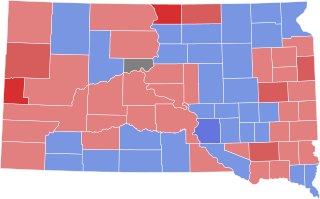
The 1938 United States Senate elections in South Dakota took place on November 8, 1938. Incumbent Republican Senator Peter Norbeck died in office on December 20, 1936. Herbert E. Hitchcock was appointed by Governor Tom Berry as Norbeck's replacement. Two elections for the same Senate seat were held on the same day; one as a special election to fill the remainder of Norbeck's six-year term, and another to select a Senator to serve the next six-year term.
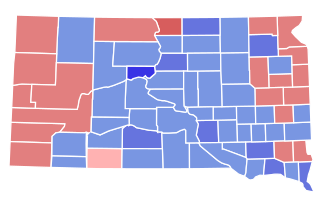
The 1928 South Dakota gubernatorial election was held on November 6, 1928. Incumbent Democratic Governor William J. Bulow ran for re-election to a second term. In the general election, he faced Attorney General Buell F. Jones, the Republican nominee. Despite Republican presidential nominee Herbert Hoover overwhelmingly defeating Democratic nominee Al Smith overwhelmingly in South Dakota, Bulow defeated Jones by a decisive margin to retain the governorship. In so doing, he became the first Democratic candidate for Governor to receive a majority of the vote in the state's history.

The 1930 South Dakota gubernatorial election was held on November 4, 1930. Incumbent Democratic Governor William J. Bulow declined to run for re-election to a third term, instead opting to successfully run for the U.S. Senate. The Republican nomination was hard-fought and the primary was crowded; because no candidate received 35% of the vote, state law required that the nomination be decided at a state party convention. There, former State Senator Warren Green, the last-place finisher in the primary, defeated Secretary of State Gladys Pyle, the plurality winner. In the general election, Green faced D. A. McCullough, the state's Rural Credits Commissioner and the Democratic nominee. Despite Bulow's success in the preceding two elections, Green defeated McCullough by a decisive margin—even as Bulow himself was elected to the U.S. Senate.

The 1932 South Dakota gubernatorial election was held on November 8, 1932. Incumbent Republican Governor Warren Green ran for re-election to a second term. He defeated former Governor Carl Gunderson in the Republican primary and faced former State Representative Tom Berry, the Democratic nominee, in the general election. Aided by Democratic presidential nominee Franklin D. Roosevelt's landslide victory in South Dakota, Berry defeated Green for re-election in a landslide.

The 1940 South Dakota gubernatorial election was held on November 5, 1940. Incumbent Republican Governor Harlan J. Bushfield sought re-election to a second term. After winning the Republican primary by a large margin, he faced Democrat Lewis W. Bicknell, former Day County State's Attorney, in the general election. Though Bushfield underperformed Republican presidential nominee Wendell Willkie, who won the state in a landslide, he nonetheless defeated Bicknell by a wide margin to easily win re-election.

The 1942 South Dakota gubernatorial election was held on November 3, 1942. Incumbent Republican Governor Harlan J. Bushfield declined to seek re-election to a third term and instead successfully ran for the U.S. Senate. A crowded Republican primary developed to succeed him, and because no candidate received 35% of the vote, the nomination was decided at the state Republican convention, where former Attorney General Merrell Q. Sharpe, the second-place finisher in the primary, won the nomination. In the general election, Sharpe faced Democratic nominee Lewis W. Bicknell, the 1940 Democratic nominee for governor. Aided by the national Republican landslide, Sharpe defeated Bicknell in a landslide.

